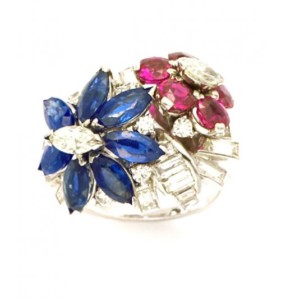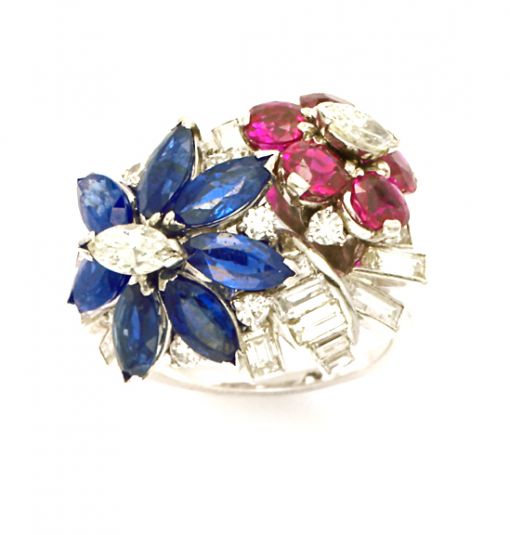
The evolution of the cocktail ring came about in the early 1920’s, with the social revolution that made it acceptable for women to drink, smoke and touch-up their make-up in public.
At soigné clubs and elegant restaurants, and the newly popular Cocktail Parties, (and also, perhaps, at somewhat less elevated locations), women took full advantage of their new freedoms, and they wanted elegant accoutrements with which to do so. These items were, for the rich, yet another way of showing off their wealth with precious and often jewel-encrusted accessories. Those less fortunate could also be in style with less costly versions.
A cocktail ring is a ring of unusually large proportions, meant to draw attention as the drinker raised her glass. These could take many forms, as long as the ring was large enough to attract the eye, and the idea of a cocktail ring remained fashionable through the decades, as did cocktail parties. After a brief rest, these rings have now become the new “must have” accessory.
A cocktail ring can take just about any form, as long as it is stylish and conspicuous, and what better way to be in style with great originality than with a smashing vintage ring, and you needn’t just wear it to cocktail parties – these rings go out to dinner with equal panache.
All of these, and many other cocktail rings are available for purchase at the gallery.
Cocktail rings, l-r: Cartier, Paris, Ruby and Diamond ring, ca. 1960’s; Marchak, Paris, Sugar-loaf turquoise and diamond ring, ca. 1950’s; Chaumet, Paris, Ruby and Diamond ring, ca. 1930’s; Cartier, Paris Emerald, Ruby, and Sapphire ring, ca. 1950’s; Unknown designer, USA, Sapphire and Pearl ring, ca. 1950’s; Unknown designer, France, Gold and Diamond ring, ca. 1950’s.
Audrey Friedman for Primavera Gallery
This article and the images in it are copyright – protected, and may not be excerpted or reproduced in any form without the consent of Audrey Friedman at Primavera Gallery NY.


